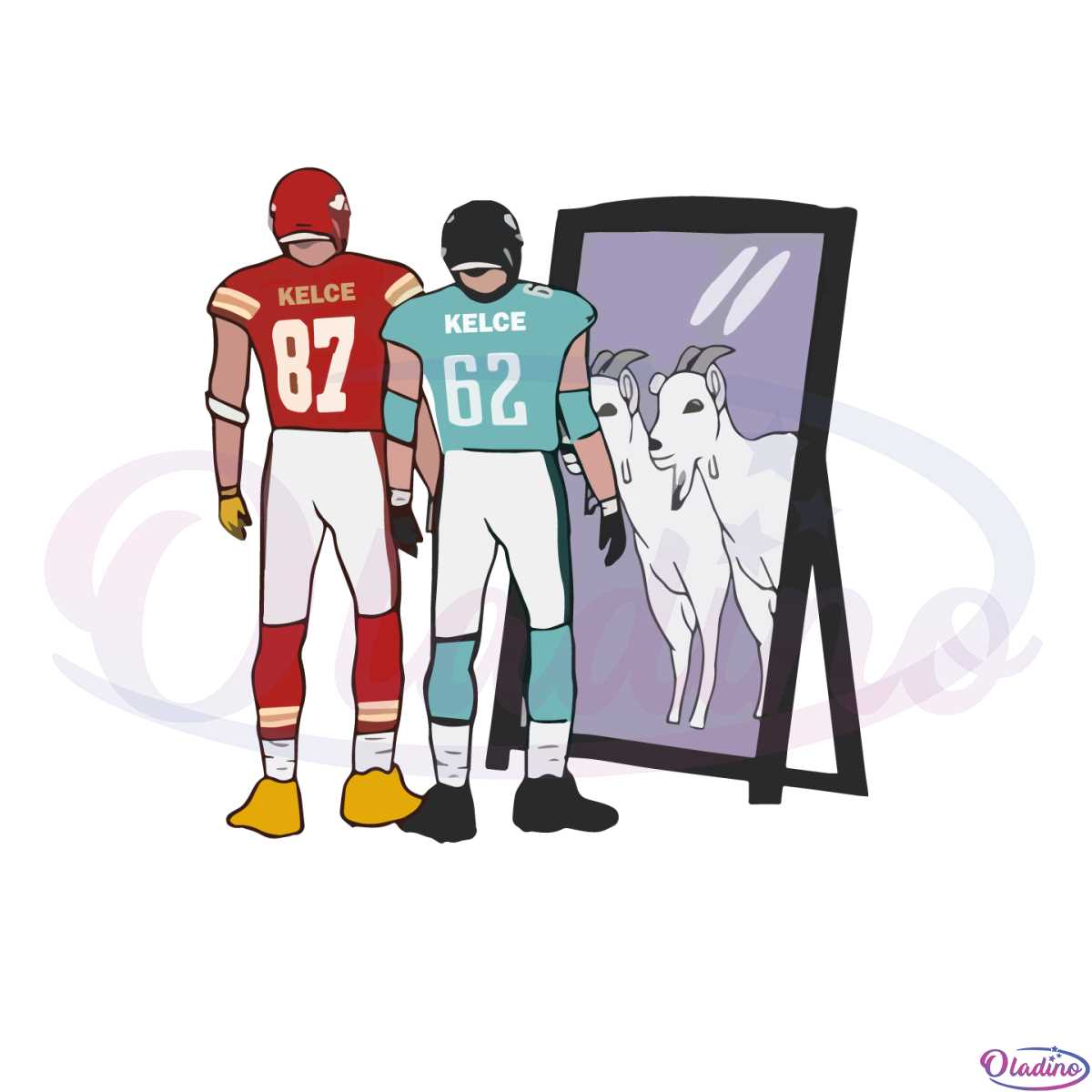Travis Kelce's name resonates with fans of American football, as he has carved out a notable career as a tight end for the Kansas City Chiefs in the National Football League (NFL). However, beyond his success on the field, there is growing concern about the long-term health implications that professional football players like Kelce may face, specifically regarding Chronic Traumatic Encephalopathy (CTE). CTE is a neurodegenerative disease linked to repeated head injuries, commonly found in individuals with a history of concussions, such as those endured by contact sports athletes.
As more research becomes available, the sports world is beginning to recognize the potential dangers of CTE and its impact on players’ lives post-retirement. The discussion around CTE has opened up conversations about the safety protocols and preventative measures in place to protect athletes. This article delves into the relationship between Travis Kelce and CTE, exploring the implications of the disease on football players, and what measures are being taken to mitigate these risks.
In this comprehensive analysis, we will explore Travis Kelce's background, the nature of CTE, the challenges in diagnosing and treating the condition, and the impact of CTE on athletes and their families. We will also look into the NFL's response to the growing concerns about CTE and highlight the importance of awareness and education in addressing this critical issue. Join us as we navigate the complex intersection of sports, health, and safety in the context of Travis Kelce and CTE.
Read also:Latest Buzz Around Lindsay Lohan Leaked Content Facts Details And More
Table of Contents
- Biography of Travis Kelce
- Understanding CTE
- The Connection Between Football and CTE
- Travis Kelce: Career Overview
- Repeated Head Injuries in Football
- Symptoms and Diagnosis of CTE
- Impact of CTE on Athletes
- Prevention and Safety Measures
- The NFL's Response to CTE Concerns
- Awareness and Education
- Travis Kelce's Contribution to CTE Awareness
- The Future of Football and Health
- Role of Technology in Preventing CTE
- Frequently Asked Questions About Travis Kelce CTE
- Conclusion
Biography of Travis Kelce
Travis Kelce was born on October 5, 1989, in Westlake, Ohio. He displayed athletic talent from a young age, participating in multiple sports throughout his school years. Kelce attended the University of Cincinnati, where he played college football for the Cincinnati Bearcats. His exceptional performance on the field earned him a spot in the NFL Draft, and he was selected by the Kansas City Chiefs in the third round of the 2013 NFL Draft. Since then, Kelce has become one of the most prominent tight ends in the league, known for his athletic prowess and dynamic playmaking abilities.
| Full Name | Travis Michael Kelce |
|---|---|
| Date of Birth | October 5, 1989 |
| Birthplace | Westlake, Ohio, USA |
| Height | 6 ft 5 in (1.96 m) |
| Weight | 260 lb (118 kg) |
| Position | Tight End |
| Team | Kansas City Chiefs |
| College | University of Cincinnati |
Understanding CTE
Chronic Traumatic Encephalopathy, commonly referred to as CTE, is a progressive degenerative disease affecting the brain. It is primarily associated with repeated blows to the head, which are common in contact sports like football. CTE is characterized by a build-up of tau protein in the brain, leading to symptoms such as memory loss, confusion, impaired judgment, aggression, depression, and eventually, progressive dementia. The condition can only be definitively diagnosed post-mortem, making early detection and prevention challenging.
The Connection Between Football and CTE
Football, with its high-impact collisions and tackles, has been closely linked to the development of CTE in players. Studies have shown that athletes exposed to repetitive head trauma are at a higher risk of developing the disease. The NFL has been at the forefront of this issue, as many former players have been diagnosed with CTE posthumously. This connection has led to increased scrutiny of the sport and calls for improved safety measures to protect players from long-term neurological damage.
Travis Kelce: Career Overview
Travis Kelce's career in the NFL has been marked by numerous accolades and achievements. Since joining the Kansas City Chiefs, he has consistently ranked among the top tight ends in the league. Kelce is known for his exceptional receiving skills, route running, and ability to make crucial plays in high-pressure situations. He has been selected to multiple Pro Bowls and has played a pivotal role in the Chiefs' success, including their victory in Super Bowl LIV. Despite his on-field success, Kelce, like many other athletes, is aware of the potential long-term health risks associated with playing professional football.
Repeated Head Injuries in Football
Football players, including Travis Kelce, are susceptible to repeated head injuries due to the physical nature of the sport. Concussions and sub-concussive hits are common occurrences during games and practices. These injuries can have cumulative effects, increasing the risk of developing CTE. The NFL and other football organizations have implemented protocols to manage and reduce the occurrence of head injuries, but the risk remains a significant concern for players and medical professionals alike.
Symptoms and Diagnosis of CTE
The symptoms of CTE can vary widely and often overlap with other neurological disorders, making diagnosis challenging. Common symptoms include memory loss, mood swings, personality changes, depression, and cognitive decline. Due to the progressive nature of the disease, symptoms may worsen over time. Currently, CTE can only be diagnosed through a post-mortem examination of the brain, highlighting the need for further research and development of diagnostic tools that can identify the disease in living individuals.
Read also:Trumps Favorite Chart A Deep Dive Into Its Significance And Impact
Impact of CTE on Athletes
CTE can have a profound impact on athletes, affecting their mental health, cognitive function, and overall quality of life. Many former football players have reported struggling with symptoms related to CTE, which can lead to significant personal and professional challenges. The condition not only affects the athletes themselves but also their families, who may witness changes in behavior and personality. The long-term implications of CTE emphasize the importance of addressing head injuries and implementing effective measures to protect athletes.
Prevention and Safety Measures
Preventing CTE involves reducing the risk of head injuries through improved safety measures and protocols. The NFL has introduced several initiatives, such as the implementation of new helmet technologies, rule changes to minimize dangerous plays, and comprehensive concussion management programs. Additionally, there is a growing emphasis on educating players, coaches, and medical staff about the risks of head injuries and the importance of early intervention.
The NFL's Response to CTE Concerns
The NFL has faced criticism for its handling of CTE and player safety. In response, the league has taken steps to address these concerns, including funding research initiatives, enhancing safety protocols, and collaborating with medical experts to improve player health outcomes. The NFL's efforts to address CTE are part of a broader movement within the sports community to prioritize athlete safety and well-being.
Awareness and Education
Raising awareness and educating players, coaches, and the public about CTE is crucial in addressing the issue. Efforts to increase awareness include public service campaigns, educational programs, and partnerships with organizations dedicated to brain health. By fostering a culture of safety and informed decision-making, the sports community can work towards reducing the incidence of CTE and supporting athletes in their post-career lives.
Travis Kelce's Contribution to CTE Awareness
As a prominent figure in the NFL, Travis Kelce has the platform to influence discussions around CTE and player safety. While Kelce has not publicly disclosed any personal experiences with CTE, his involvement in initiatives that promote player health and safety can contribute to broader awareness of the issue. Athletes like Kelce can play a vital role in advocating for change and supporting research efforts to better understand and prevent CTE.
The Future of Football and Health
The future of football depends on balancing the excitement and competitiveness of the sport with the health and safety of its players. As the understanding of CTE evolves, so too must the strategies to protect athletes. This includes ongoing research, advancements in protective gear, and the development of new protocols to minimize head injuries. The commitment to player health is essential for the sport to thrive and for athletes to enjoy long, fulfilling lives post-retirement.
Role of Technology in Preventing CTE
Technology plays a crucial role in preventing CTE by providing innovative solutions to reduce the risk of head injuries. Advances in helmet design, impact sensors, and data analytics are helping to identify and mitigate dangerous situations on the field. These technological developments, combined with research-driven prevention strategies, offer the potential to significantly reduce the incidence of CTE in contact sports.
Frequently Asked Questions About Travis Kelce CTE
1. What is CTE, and how is it related to football?
CTE, or Chronic Traumatic Encephalopathy, is a degenerative brain disease linked to repeated head injuries, common in contact sports such as football. It is associated with symptoms like memory loss, depression, and cognitive decline.
2. How can CTE be prevented in football players?
Preventing CTE involves reducing head injuries through improved helmet technology, rule changes to minimize dangerous plays, comprehensive concussion management programs, and educating players and coaches about the risks.
3. Has Travis Kelce been diagnosed with CTE?
As of now, there is no public information indicating that Travis Kelce has been diagnosed with CTE. However, awareness of the condition is crucial for all contact sports athletes.
4. What steps has the NFL taken to address CTE?
The NFL has implemented several initiatives, including funding research, enhancing safety protocols, and collaborating with medical experts to improve player health outcomes and address CTE concerns.
5. What role does technology play in preventing CTE?
Technology aids in preventing CTE by developing advanced protective gear, impact sensors, and data analytics to identify and mitigate dangerous situations on the field, helping reduce the incidence of head injuries.
6. How can athletes contribute to CTE awareness?
Athletes can contribute to CTE awareness by advocating for player safety, participating in educational initiatives, supporting research efforts, and using their platforms to raise public awareness about the risks and prevention strategies.
Conclusion
In conclusion, the issue of CTE in football, exemplified by the career of Travis Kelce, underscores the critical need for continued efforts to protect athletes from long-term health risks. Through research, technology, and education, the sports community can work towards minimizing the impact of CTE, ensuring the well-being of players both on and off the field. As awareness grows, so too does the potential to create a safer environment for future generations of athletes.

